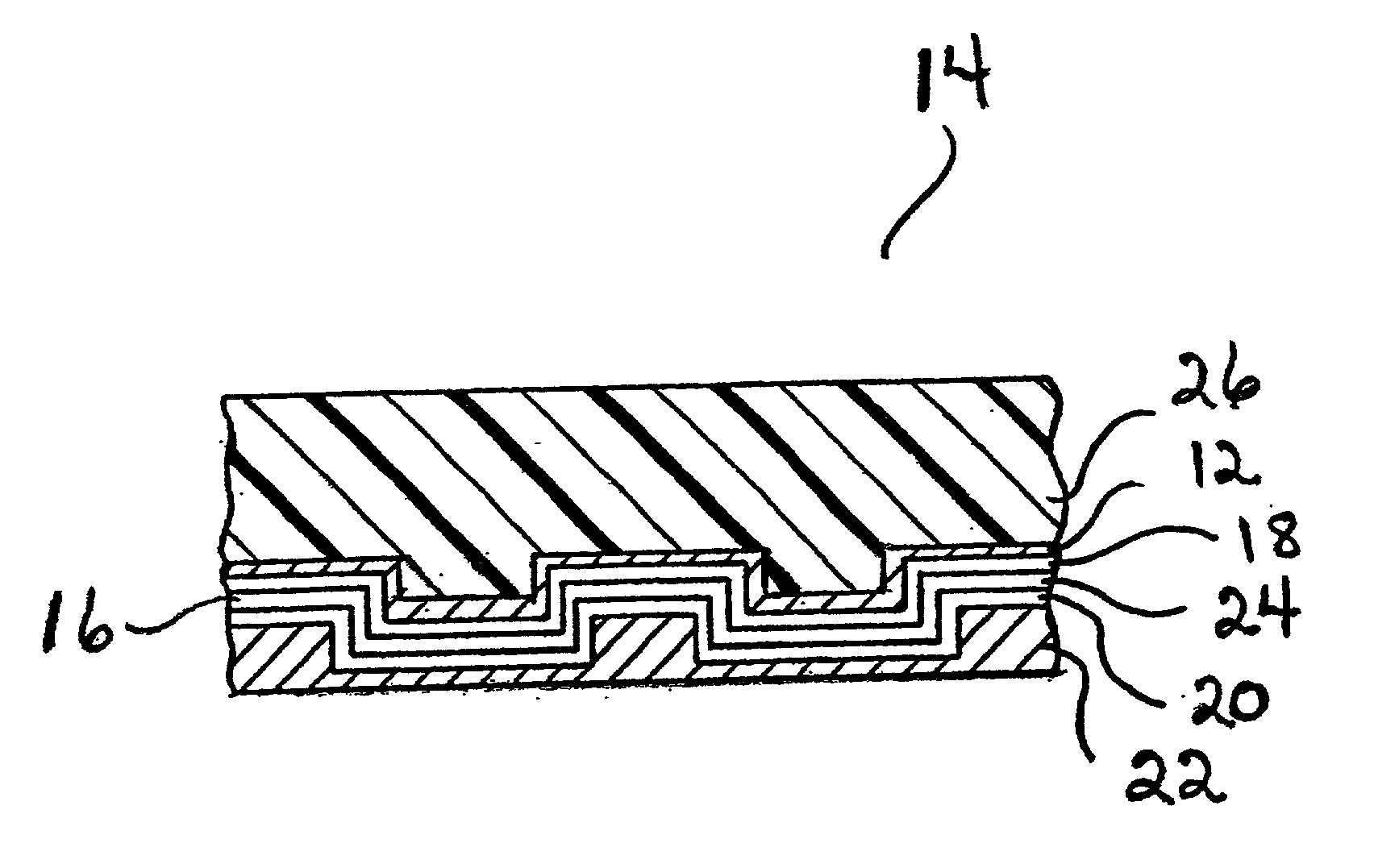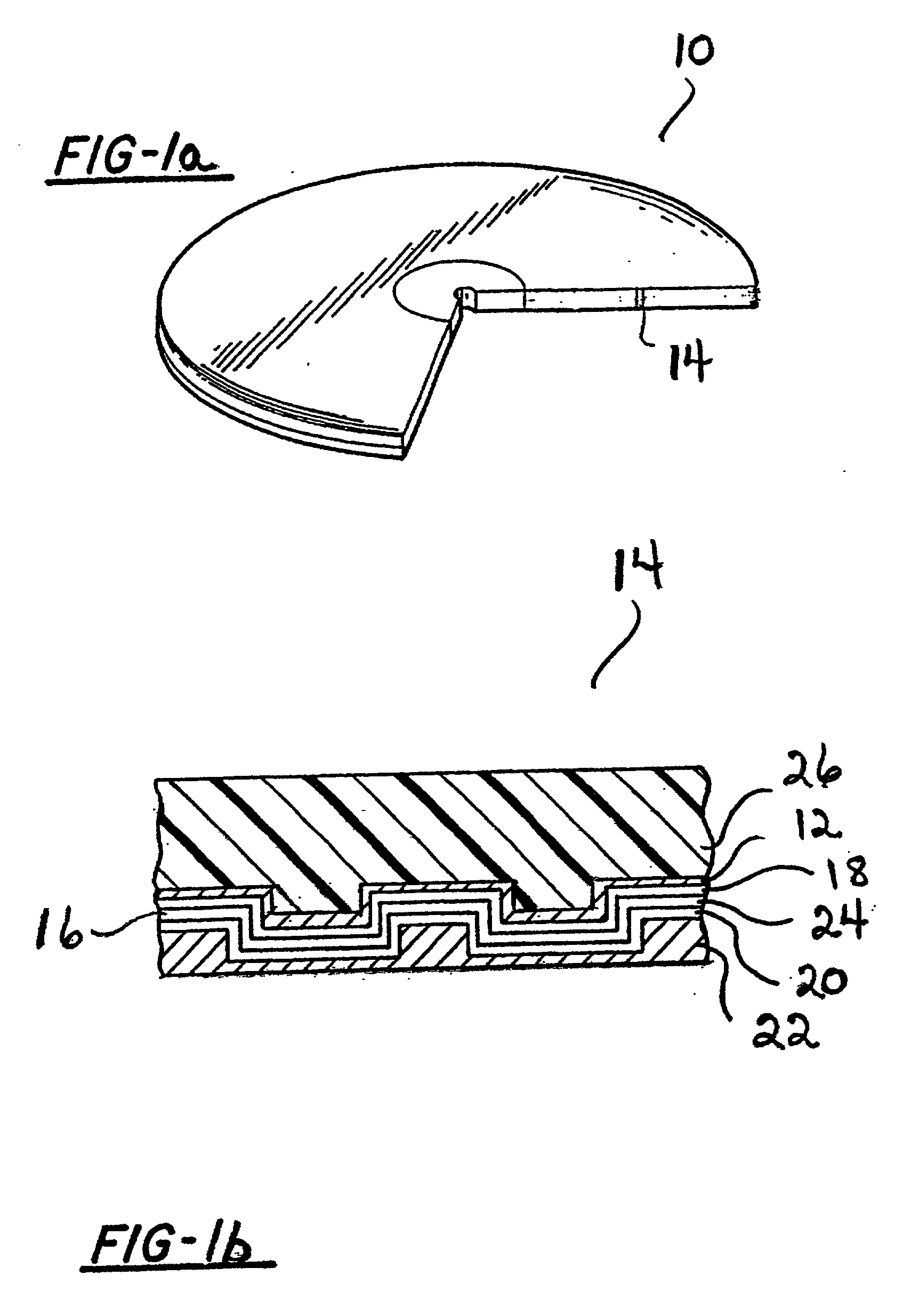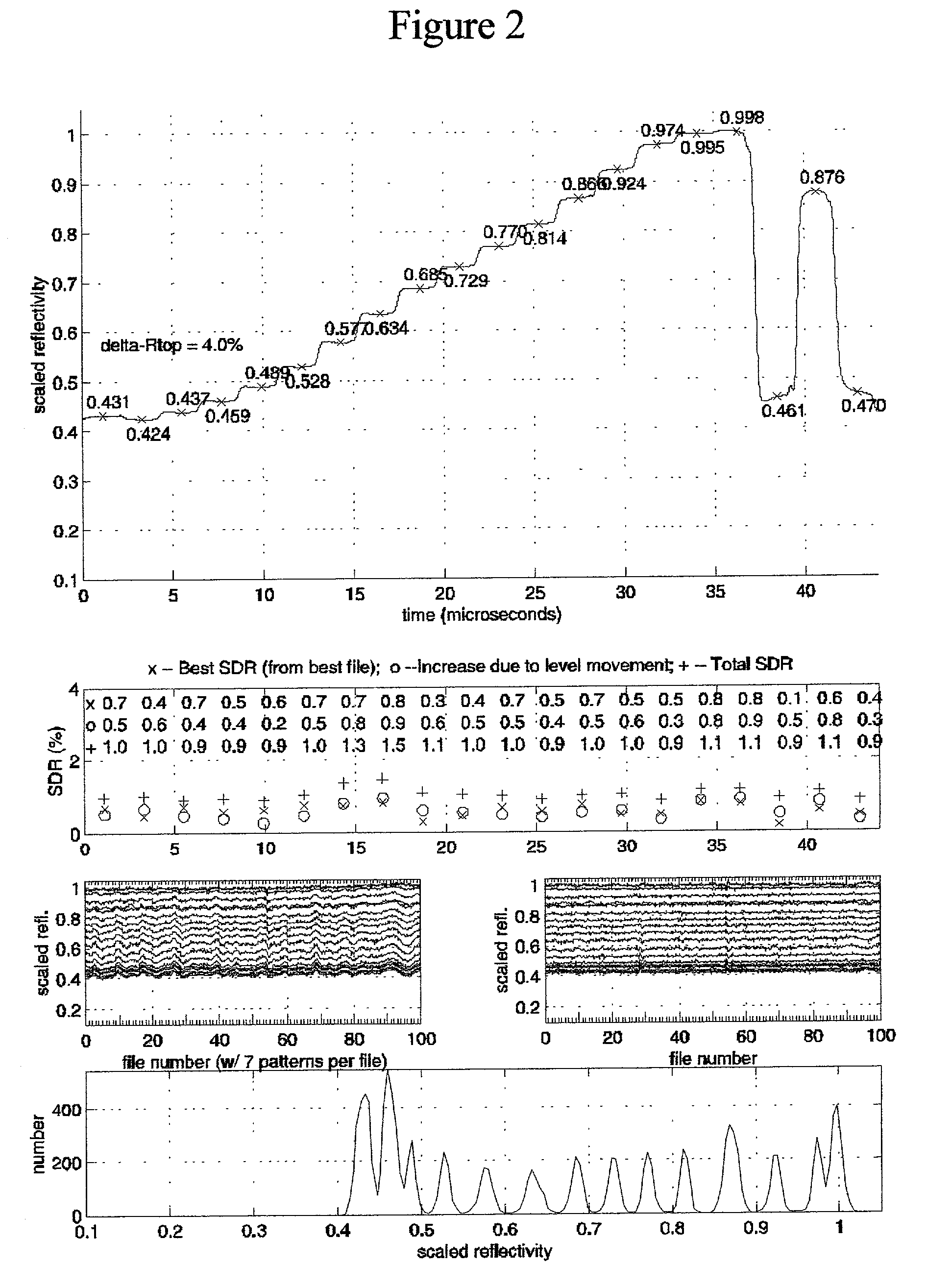Phase change data storage device for multi-level recording
a data storage device and multi-level technology, applied in mechanical recording, optical recording/reproducing/erasing methods, instruments, etc., can solve problems such as failure, failure to meet the needs of recording,
- Summary
- Abstract
- Description
- Claims
- Application Information
AI Technical Summary
Problems solved by technology
Method used
Image
Examples
Embodiment Construction
[0036] The results show that for In:Sb:Te composition, more accurate multi-level data recording can be achieved at high speeds.
1TABLE 1 Phase change materials with multilevel writing at various speeds. Phase Change SDR at SDR at SDR at Alloy 1.9 m / s 3.5 m / s 6 m / s ECD In:Sb:Te 1.10% 0.84% 1.16% Commercial 1.04% 1.51% 2.12% AgInSbTe
[0037] A preferred phase change alloy is represented by eutectic alloys having the composition M(Sb.sub.70Te.sub.30), where M is one or more transition metals or main group metals. The alloy is preferably Ag free or substantially Ag free. SbTe is preferably present at the eutectic composition. Sb:Te is preferably present at a 70:30 atomic ratio + / -20% relative to one another. A most preferred composition includes Sb at 72% and Te at 28% relative to one another. M is preferably at least one main group metal, more preferably In. In is preferably present at an atomic ratio of 3 to 30% relative to the total alloy, preferably 7-15%, and most preferably 9-13%. Th...
PUM
| Property | Measurement | Unit |
|---|---|---|
| Fraction | aaaaa | aaaaa |
| Fraction | aaaaa | aaaaa |
| Fraction | aaaaa | aaaaa |
Abstract
Description
Claims
Application Information
 Login to View More
Login to View More - R&D
- Intellectual Property
- Life Sciences
- Materials
- Tech Scout
- Unparalleled Data Quality
- Higher Quality Content
- 60% Fewer Hallucinations
Browse by: Latest US Patents, China's latest patents, Technical Efficacy Thesaurus, Application Domain, Technology Topic, Popular Technical Reports.
© 2025 PatSnap. All rights reserved.Legal|Privacy policy|Modern Slavery Act Transparency Statement|Sitemap|About US| Contact US: help@patsnap.com



